As concern grows regarding the contribution of fossil fuels to global warming, solar energy is an increasingly attractive power source due to its zero emissions and infinite supply. Solar-powered architecture that promotes a sustainable, environmentally friendly lifestyle has been a growing trend of late.
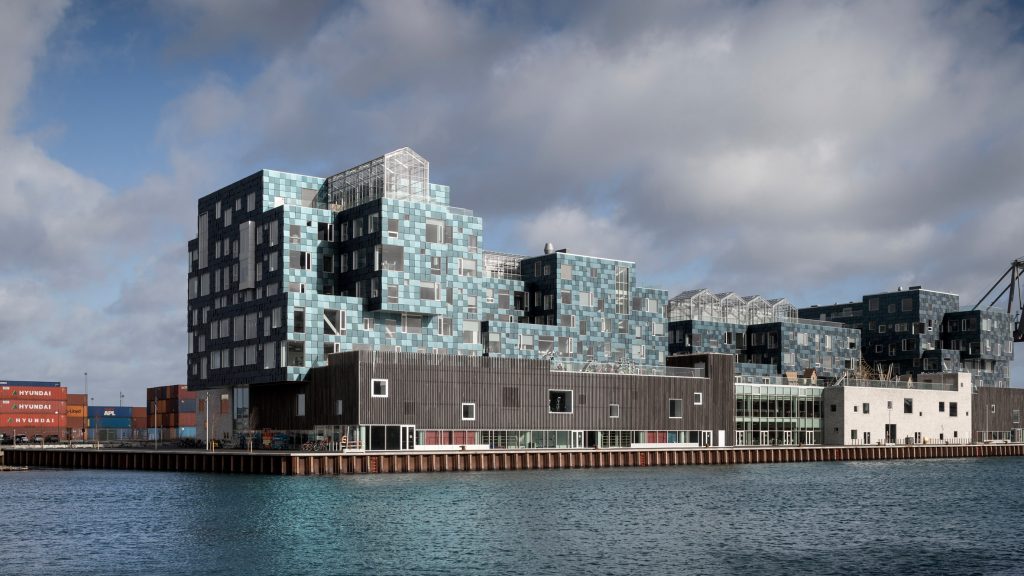
Scandinavian firm CF Møller has covered a new school building for Copenhagen International School in 12,000 solar panels, each individually angled to create a sequin-like effect. The school is located on a prominent site in Copenhagen’s new Nordhavn district, its premises linked with the public sphere in the urban environment through the waterfront promenade that offers opportunities for relaxation and various activities.

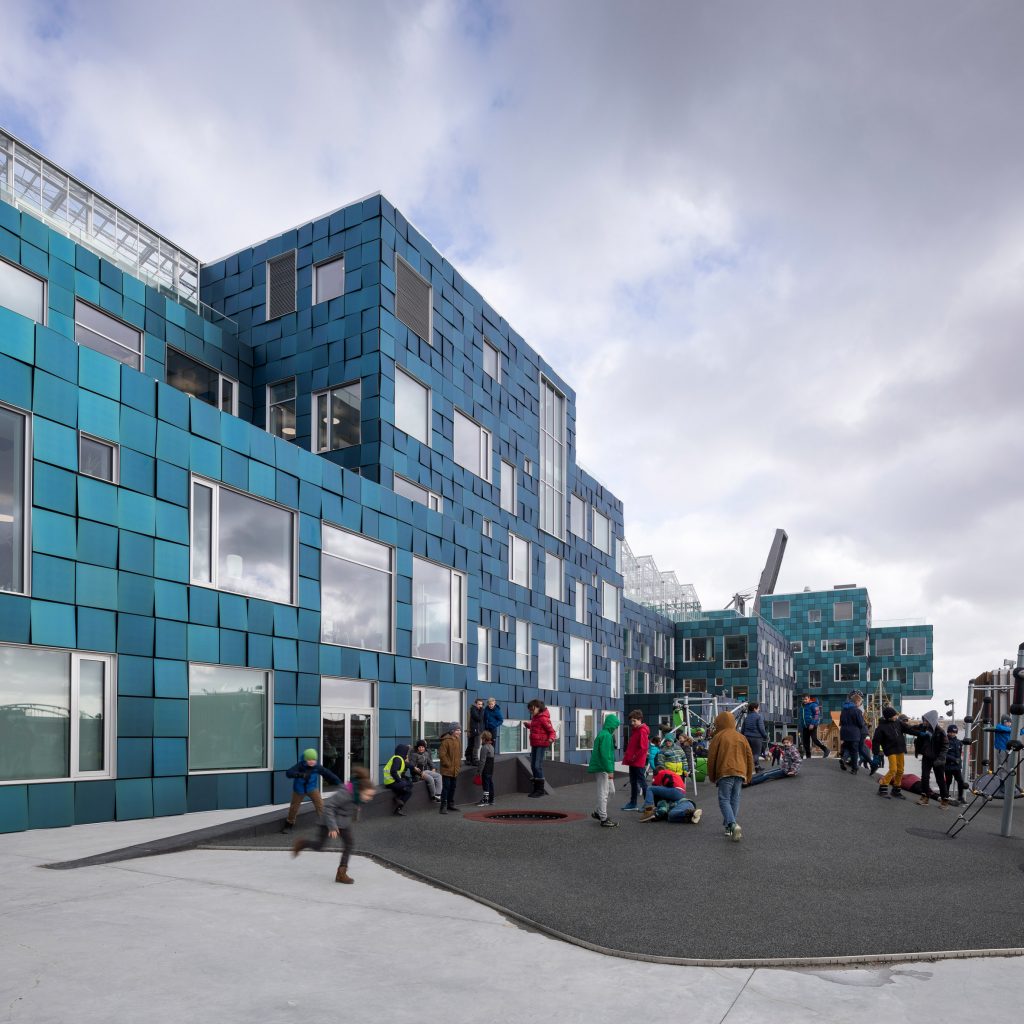
Copenhagen International School by CF Møller (also header image)
The solar cells cover a total area of 6,048 square meters making it one of the largest building-integrated solar power plants in Denmark. The blue-tinged panels are tilted in opposing directions to reflect light in different ways, creating a pixellated-like pattern on the exterior that resonates with the water of the harbor. In total, they provide 50 per cent of the school’s annual electricity consumption.
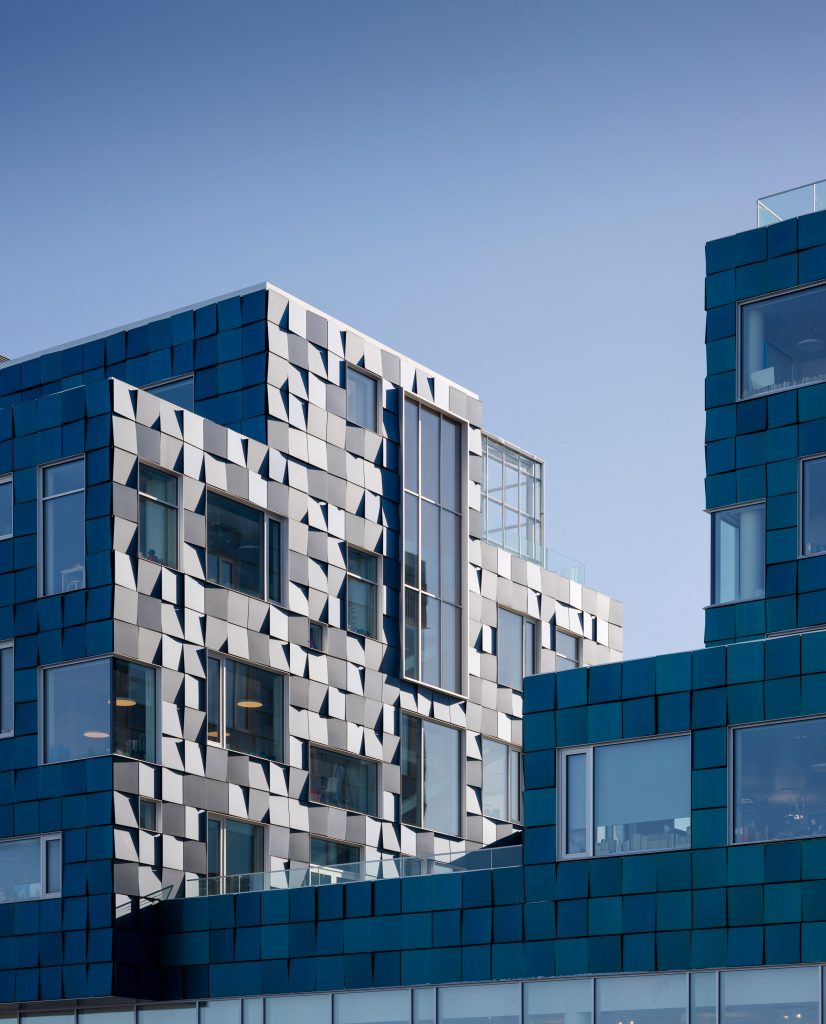
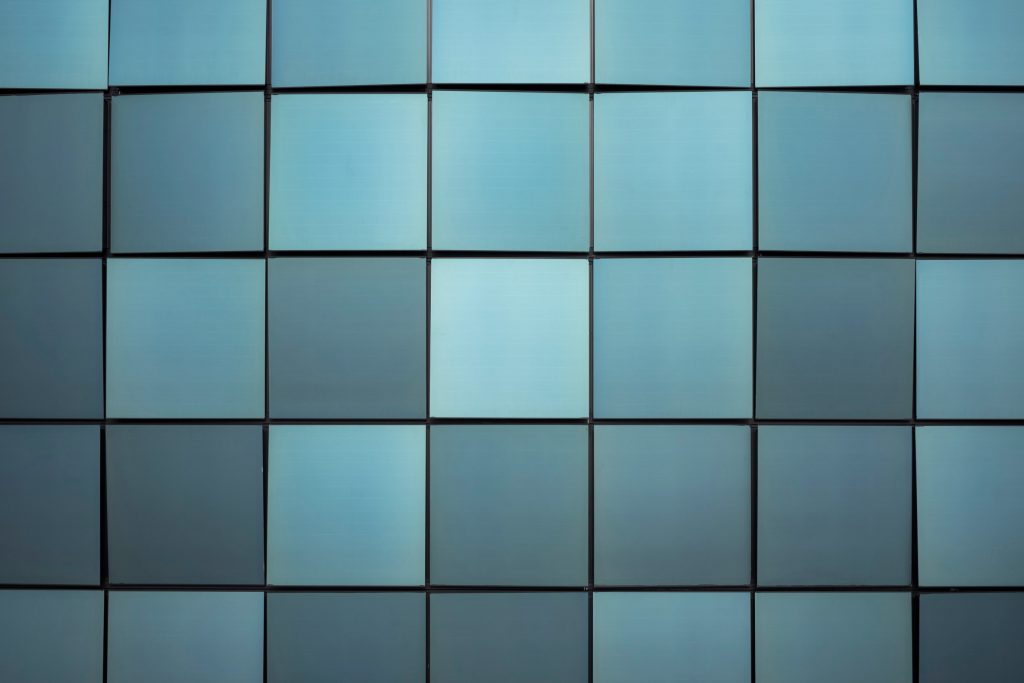
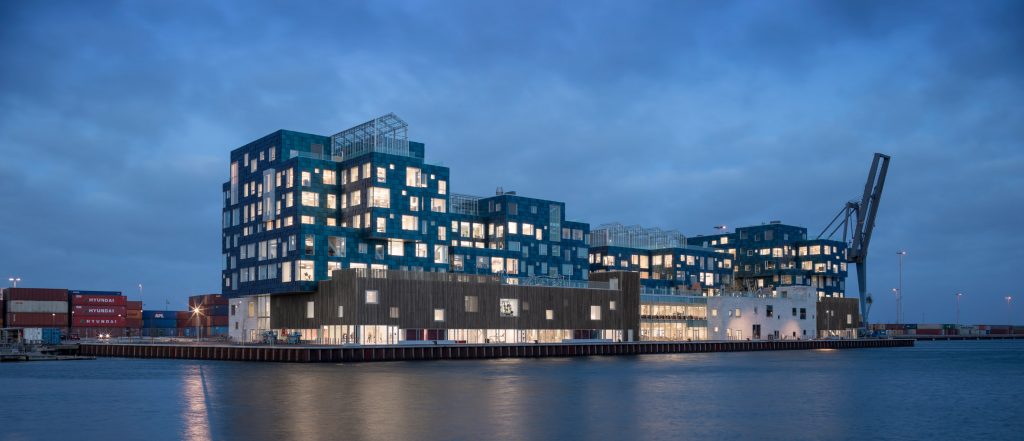
Copenhagen International School by CF Møller
The main school building is subdivided into four smaller towers from five to seven storeys. The subdivision of the school into four units creates identity and makes it easier for people to find their way. All four school units are built on top of the ground-floor base, which contains common areas and includes a shared roof terrace fucntioninh as a school playground for the whole school.
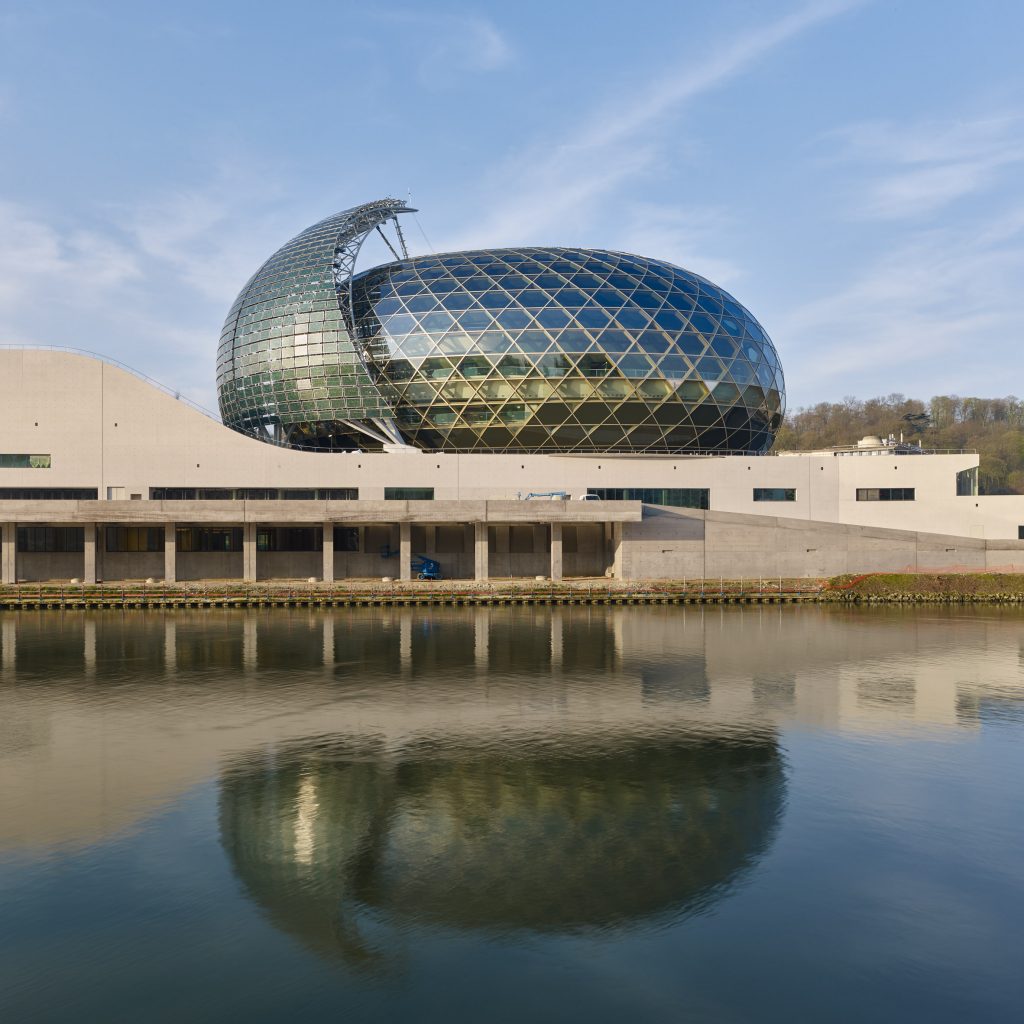

La Seine Musicale by Shigeru Ban Architects
Paris-based office of the Pritzker Prize-winning Japanese architect Shigeru Ban has collaborated with local architect Jean de Gastines to design La Seine Musicale, a musical facility comprising a large multipurpose venue and a smaller auditorium neighbourhoods in the French capital’s western suburbs.


La Seine Musicale by Shigeru Ban Architects
While the 6,000-seat Grand Seine multi-purpose hall is designed to host concerts, musicals and ballets, the smaller performance space is intended for events not requiring amplification. Externally, this egg-shaped auditorium is housed within grid-shell of laminated timber, characteristic of Ban. The latticed wooden frame is hidden behind glazing and sheltered from direct sunlight by a sail-like surface covered with photovoltaic cells.

La Seine Musicale by Shigeru Ban Architects
The solar panels move on rails to follow the path of the sun, therefore increasing its efficiency and ensuring the lobby behind is shaded throughout the day. The studio compares the triangular solar wall with a sail and the complex itself with an environmentally friendly ship.

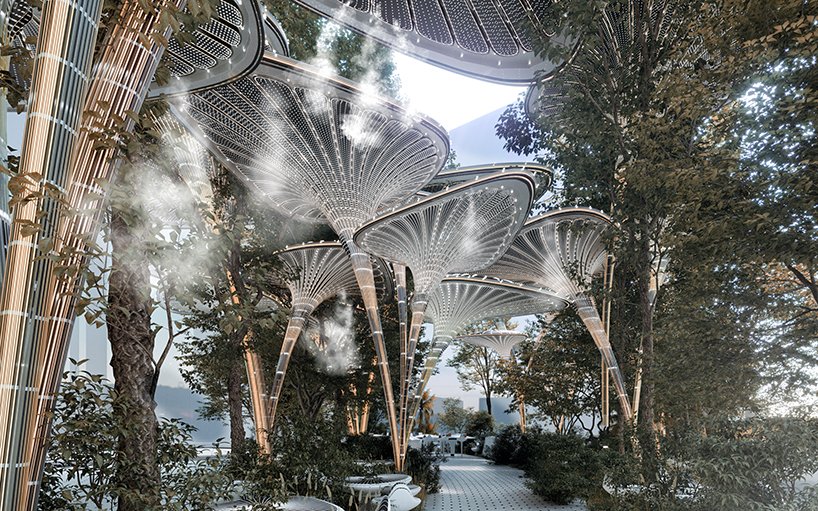
Oasys by MASK architects
Oasys by the international architecture and design office MASK architects is a modular multifunctional complex In Abu Dhabi designed to offer residents a spacious natural refuge amid the dense urban environment.
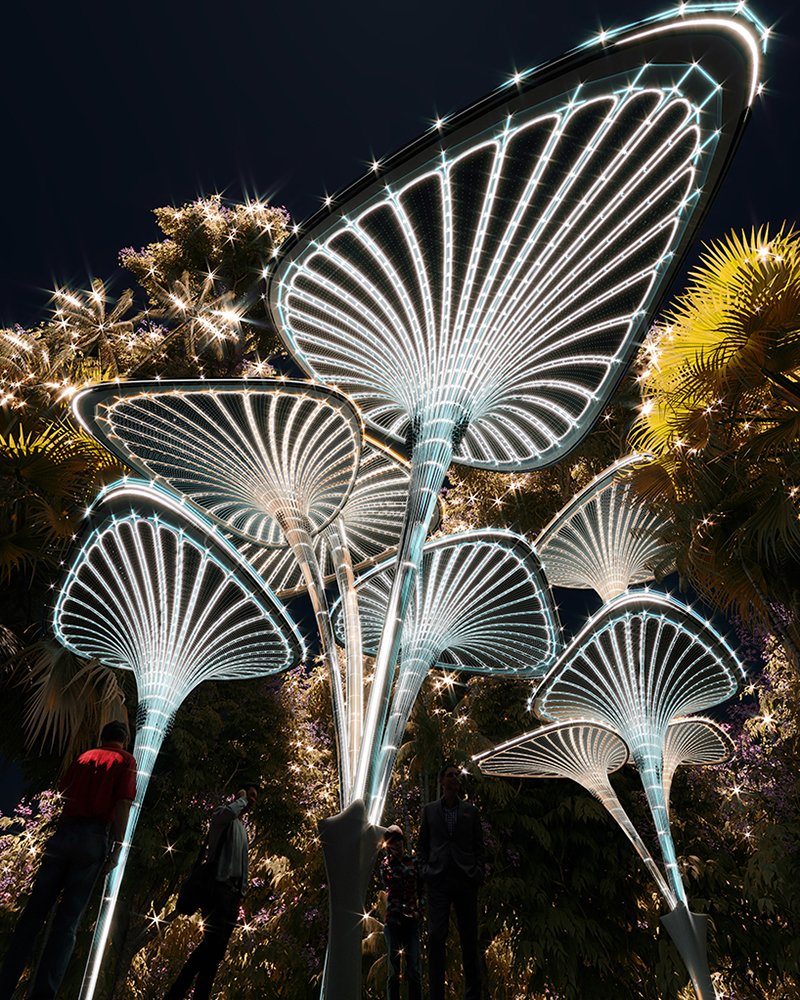
Oasys by MASK architects
The complex encompasses a group of structures inspired by the appearance of palm leaves that can be adapted to spaces of all scales and environments, standing as a barrier from heat, UV rays, noise and wind. The palm canopies include nozzles that spray mist into the air to create a cool atmosphere, the branch formations of the structure protect visitors against wind and sound, while the roofs feature solar panels to harvest solar energy. All functional technical data – water and electric supplier pipes and the steel structure – is hidden in the foundation base.
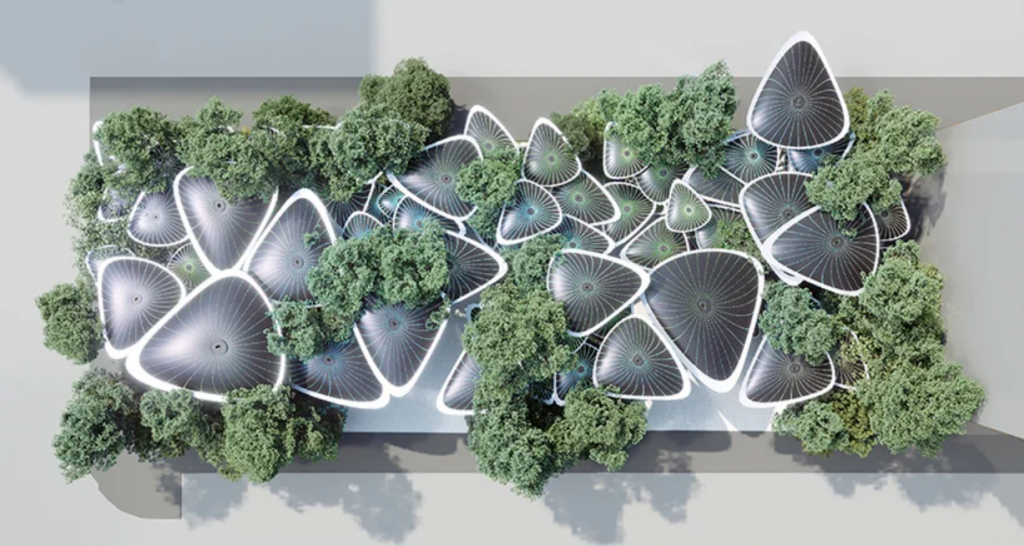
Oasys by MASK architects
Between the main steel structure and the exterior cladding made from a 30% glossed-transparency material, the design features a double-layered surface to create a gap that houses lighting beams that illuminate the palm structures.